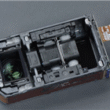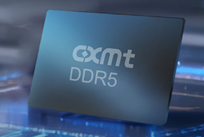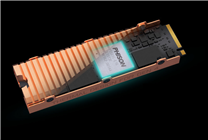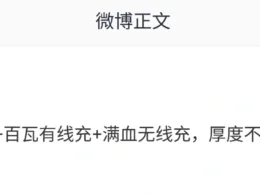Changxin Unveils DDR5 Memory: Bridging the Technology Gap with South Korea
Summary:
- Changxin Storage has launched its DDR5 and LPDDR5X products, achieving speeds of up to 8000Mbps.
- The new memory solutions aim to close the technological gap between Chinese and Korean manufacturers.
- With an 8% market share in the DRAM sector, Changxin is positioned to challenge global industry leaders.
On November 25, at the IC China 2025 (China International Semiconductor Expo), Changxin Storage introduced its innovative DDR5 and LPDDR5X memory products, marking a significant milestone in the competitive landscape of semiconductor technology. This strategic initiative aims to challenge leading storage manufacturers from Korea and the United States.
Advancements in DDR5 Technology
Changxin’s latest DDR5 series achieves an impressive maximum speed of 8000Mbps and a peak individual chip capacity of 24Gb. These specifications position Changxin at the forefront of global memory technology. The company unveiled seven major module products that cater to diverse segments, including servers, workstations, and personal computers.
Additionally, the LPDDR5X series, launched last month, targets the mobile market. It boasts a maximum speed of 10667Mbps and chip capacities ranging from 12GB to 32GB, showcasing a variety of packaging solutions designed for optimal performance in mobile devices.
An Industry Shift
Earlier this year saw the introduction of a limited quantity of DDR5 memory from Chinese manufacturers. However, with Changxin now officially showcasing its products, it’s evident that the Chinese memory market is stepping up its game.
Industry analysts note that Changxin’s DDR5 memory performance merits recognition. The new maximum speed of 8000Mbps represents a 25% increase over the previous generation’s performance of 6400Mbps. This leap in technology indicates that Changxin is rapidly catching up with its Korean competitors. Experts in the field affirm that the performance levels of Changxin’s products are adequate for integration into advanced server systems equipped with cutting-edge CPUs.
Market Position and Future Prospects
According to recent data, Changxin Memory achieved an 8% market share in the DRAM sector, ranking fourth in the industry as of the third quarter of the year. In the NAND flash sector, Yangtze Memory secured a 13% market share during the same period, indicating a robust growth trajectory for Chinese semiconductor firms.
Despite challenges stemming from U.S. export restrictions on critical equipment like EUV lithography systems, the technological gap with South Korea in the general DRAM market has diminished. Reports suggest that this gap is now less than one year, a noteworthy shift that underscores the rapid advancements made by Chinese companies.
Looking ahead, industry experts anticipate a significant transformation in competitive dynamics as we approach the 3D DRAM era expected by 2030. This new technology, which involves stacking memory cells vertically, will likely reduce reliance on EUV lithography equipment. Analysts believe this could provide Chinese firms with the opportunity to leapfrog their competitors.
Professor Hwang Cheol-seong from the Department of Materials Science and Engineering at Seoul National University notes that the technological divide between South Korea and China has nearly evaporated. He adds that once the 3D DRAM era arrives, China is poised for further advancements in memory technology.
Conclusion
Changxin Storage’s recent product announcements signify a pivotal moment for the Chinese semiconductor industry, illustrating its commitment to innovation and competitiveness in the global market. With substantial advancements in DDR5 and LPDDR5X technologies, Changxin is no longer just a participant but a key player in the high-speed memory domain. As the industry evolves, the competitive landscape will undoubtedly continue to transform, setting the stage for new opportunities and challenges in semiconductor technology.
In summary, the strides made by Changxin not only enhance its market position but also contribute to a broader narrative of technological parity in the memory industry, fostering an environment ripe for innovation and growth.









